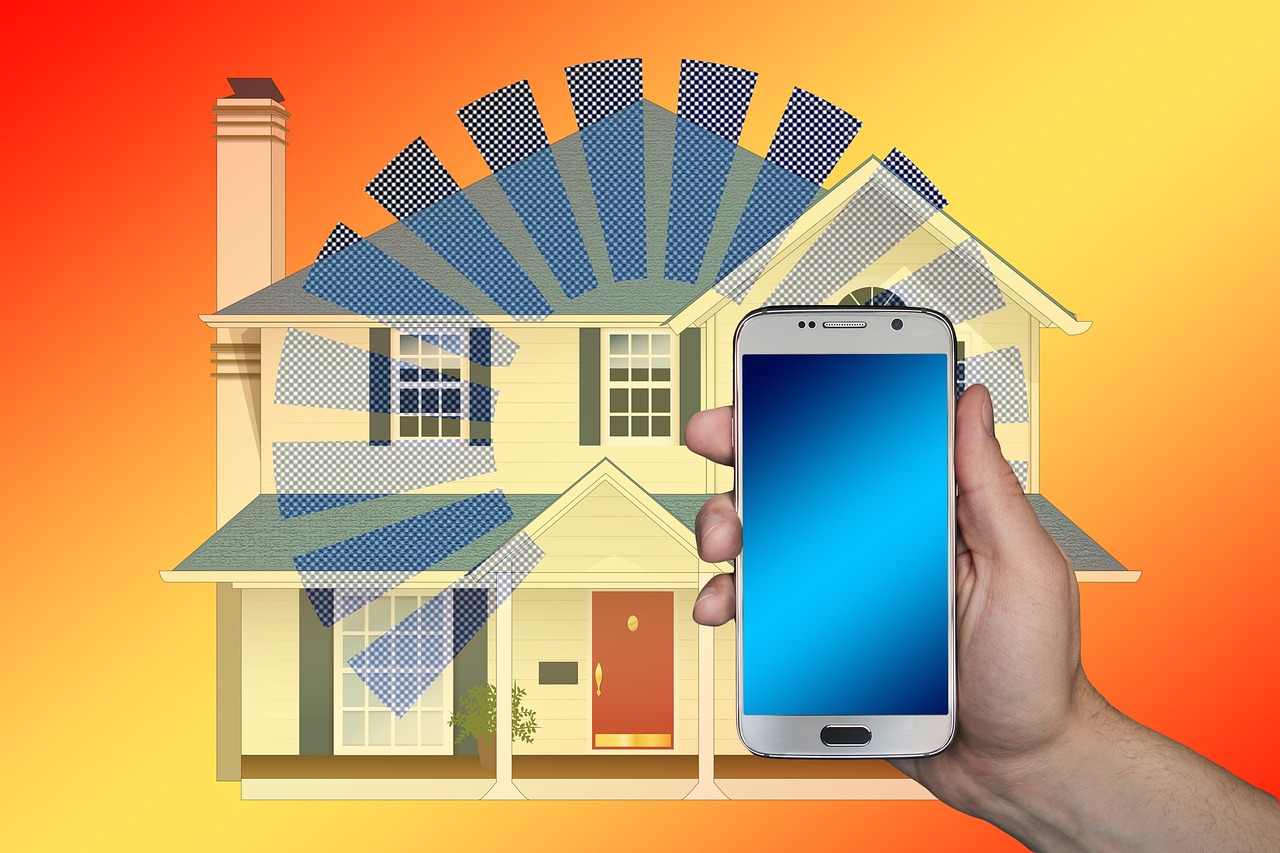In today’s fast-paced world, smart home devices are revolutionizing the way we live. From enhancing daily routines to improving home security, these innovative gadgets are designed to streamline tasks and make life more convenient. This guide will introduce you to essential smart home devices that you may not be aware of yet.
- 1. Smart Plugs: Transform any appliance into a smart device. Control them remotely using smartphone apps or voice assistants, enhancing convenience and energy efficiency.
- 2. Smart Light Bulbs: Customize your lighting with adjustable brightness and color options. These bulbs save energy and create the perfect ambiance for any occasion.
- 3. Smart Thermostats: Learn your heating and cooling preferences, optimizing energy use while providing remote temperature control for comfort and savings.
- 4. Smart Security Cameras: Monitor your home in real-time with features like motion detection and night vision, ensuring peace of mind.
- 5. Smart Doorbells: Communicate with visitors remotely, enhancing security through video feeds and motion alerts.
- 6. Smart Home Hubs: Centralize control of all your devices for seamless communication and automation across various platforms.
- 7. Smart Speakers: Not just for music, these devices serve as voice-controlled assistants, managing other devices hands-free.
- 8. Smart Locks: Enhance security with keyless entry and remote locking features, allowing you to monitor access to your home.
- 9. Smart Blinds: Automate your window coverings to control light and privacy levels, improving energy efficiency.
- 10. Smart Irrigation Systems: Optimize water usage for your garden by adjusting schedules based on weather data.
- 11. Smart Air Quality Monitors: Track indoor pollutants and maintain a healthy living environment with real-time data.
Conclusion: Embracing Smart Home Technology
Incorporating these smart home devices can significantly enhance your quality of life. By improving convenience, security, and energy efficiency, you can create a more connected and efficient home. Embrace technology and discover the benefits of a smarter living environment.
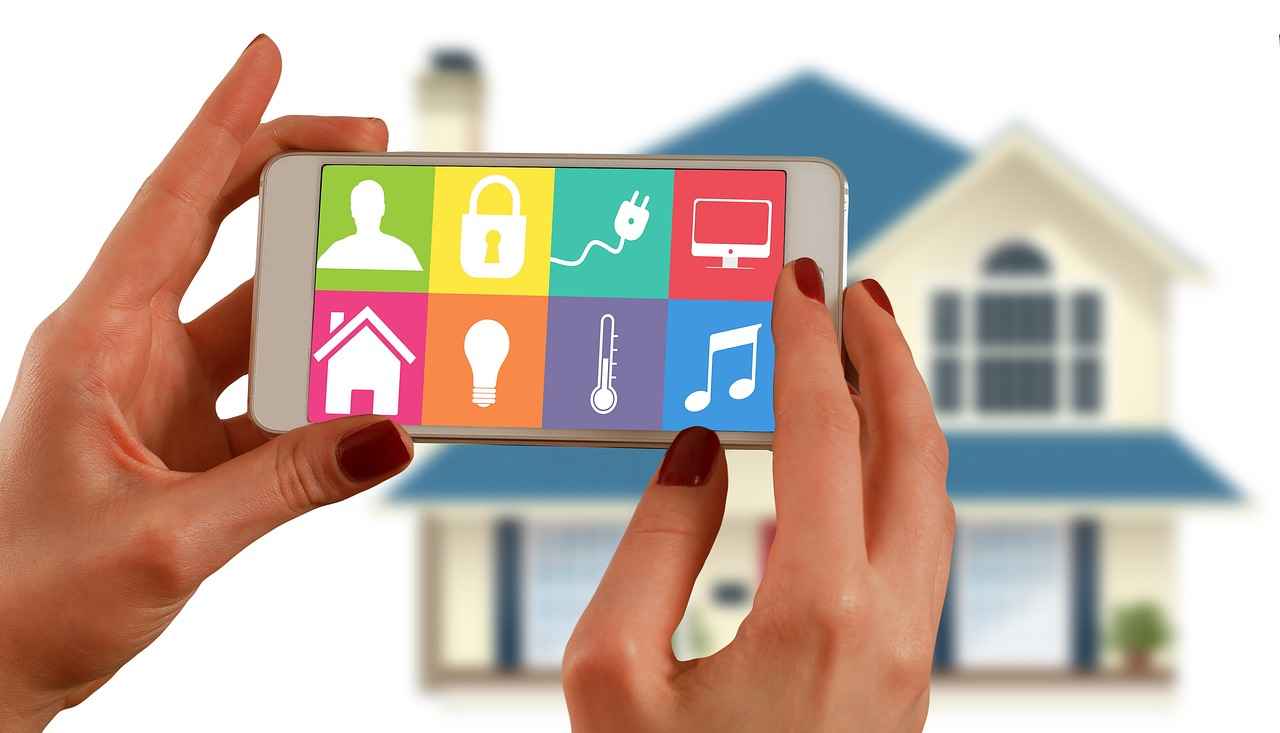
1. Smart Plugs
Smart Plugs are revolutionizing the way we interact with our home appliances. By converting any standard device into a smart device, these plugs enable users to control their appliances remotely, enhancing convenience and energy efficiency.
Imagine being able to turn on your coffee maker from your bed or schedule your lamps to turn off automatically when you leave the house. With smart plugs, this is not just a dream but a reality. They connect to your home Wi-Fi network and can be controlled via smartphone applications or voice assistants like Amazon Alexa and Google Assistant.
Benefits of Smart Plugs:
- Remote Control: Manage your devices from anywhere, whether you’re at home or away.
- Energy Monitoring: Many smart plugs provide insights into energy usage, helping you identify which devices consume the most power.
- Scheduling: Set timers for your devices to turn on or off at specific times, which can help reduce energy waste.
- Voice Control: Integrate with voice assistants to control your devices hands-free.
How to Choose the Right Smart Plug:
- Compatibility: Ensure the smart plug is compatible with your existing smart home ecosystem.
- Load Capacity: Check the maximum load capacity to ensure it can handle your devices.
- Features: Look for additional features like energy monitoring or scheduling capabilities.
In conclusion, smart plugs are a small yet powerful addition to any smart home setup. They offer convenience, energy savings, and enhanced control over your home appliances, making them an essential gadget for modern living. By incorporating smart plugs into your home, you can enjoy a more connected and efficient lifestyle.
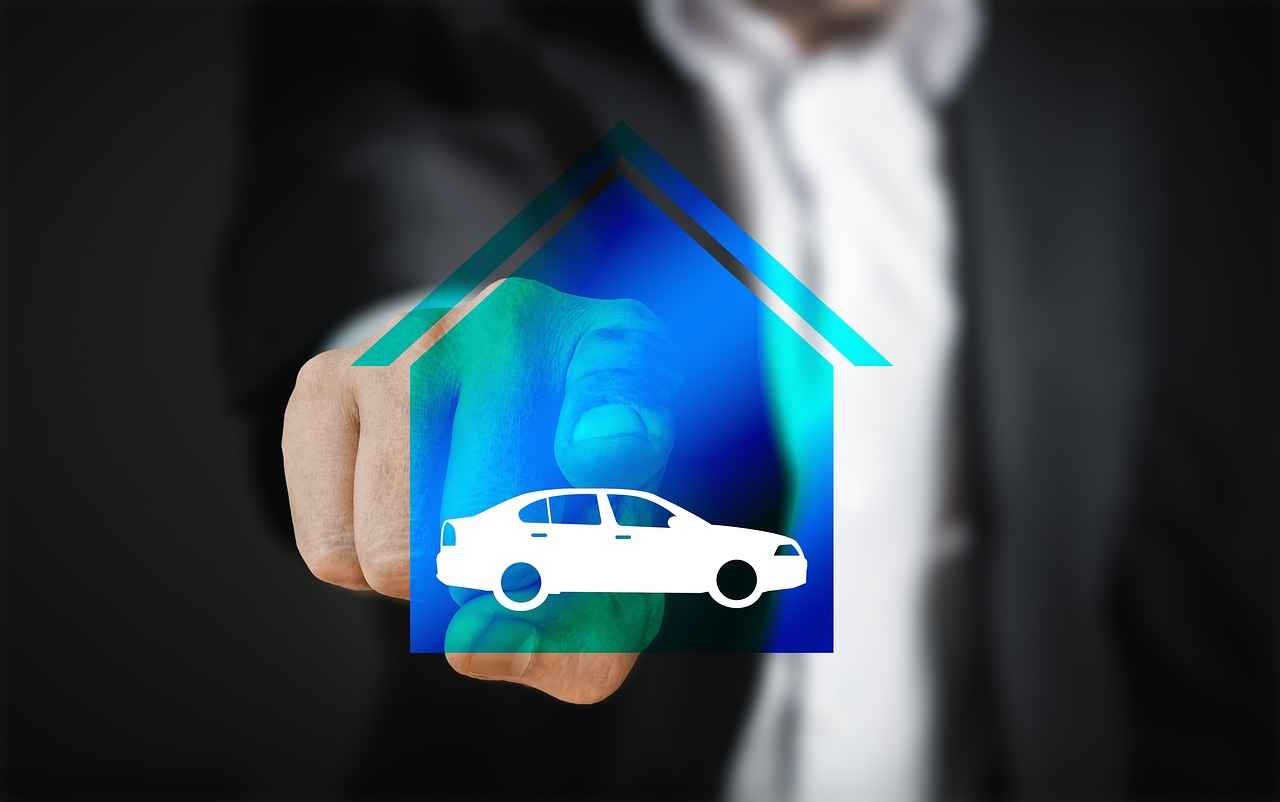
2. Smart Light Bulbs
Smart Light Bulbs have revolutionized the way we illuminate our homes, providing not just light, but also a customizable experience that caters to individual preferences and needs. These innovative devices allow users to control brightness and color through mobile applications or voice commands, making it easier than ever to create the perfect ambiance for any occasion.
One of the primary advantages of smart light bulbs is their energy efficiency. Unlike traditional incandescent bulbs, smart bulbs consume significantly less energy, leading to lower electricity bills and a reduced environmental impact. This energy-saving feature is particularly beneficial for those looking to minimize their carbon footprint while enjoying modern conveniences.
Moreover, smart light bulbs offer a wide range of customization options. Users can choose from an array of colors and brightness levels to set the mood for different activities, whether it’s a cozy movie night or a vibrant party atmosphere. This level of personalization enhances the overall experience of home lighting, making it more enjoyable and functional.
In addition to their aesthetic benefits, smart light bulbs can be programmed to operate on a schedule. This means you can set them to turn on or off at specific times, adding an extra layer of convenience and security to your home. For instance, having your lights automatically turn on at sunset can deter potential intruders while providing a warm welcome when you arrive home.
Popular brands such as Philips Hue, LIFX, and Wyze offer a variety of smart light bulbs, each with unique features and compatibility with various smart home systems. These brands have established themselves as leaders in the market, providing high-quality products that enhance the smart home experience.
In conclusion, investing in smart light bulbs is an excellent way to improve both the functionality and ambiance of your home. With their energy efficiency, customization options, and scheduling capabilities, these devices are a must-have for anyone looking to upgrade their living space.
2.1. Benefits of Smart Light Bulbs
Smart light bulbs have rapidly gained popularity in modern homes, and for good reason. These innovative devices not only enhance the ambiance of your living space but also offer a range of benefits that make them a must-have for any smart home. Below, we explore the key advantages of integrating smart light bulbs into your home.
- Energy Efficiency: One of the most significant benefits of smart light bulbs is their energy-saving capabilities. These bulbs consume up to 80% less energy compared to traditional incandescent bulbs, resulting in lower electricity bills and a reduced environmental impact.
- Convenience: Smart light bulbs can be controlled remotely via smartphone apps or voice commands, providing unparalleled convenience. Whether you’re at home or away, you can easily adjust your lighting settings with just a few taps or a simple voice prompt.
- Scheduling and Automation: With smart light bulbs, you can create customized lighting schedules. This feature allows you to set your lights to turn on and off at specific times, which can enhance security by giving the appearance that someone is home, even when you’re not.
- Customization: Smart light bulbs offer a variety of colors and brightness levels, enabling you to personalize your lighting to match your mood or occasion. Whether it’s a cozy movie night or a vibrant party atmosphere, you can easily adjust the lighting to suit your needs.
- Integration with Smart Home Systems: Many smart light bulbs are compatible with popular smart home ecosystems, such as Amazon Alexa, Google Assistant, and Apple HomeKit. This compatibility allows for seamless integration and control of your entire smart home setup.
In conclusion, smart light bulbs are an excellent addition to any home, providing energy savings, convenience, and the ability to customize and automate your lighting. By embracing this technology, you can enhance both the functionality and ambiance of your living space.
2.1.1. Energy Efficiency
Energy efficiency is a crucial aspect of modern living, especially as we become more aware of our environmental impact. In recent years, the shift from traditional incandescent bulbs to smart light bulbs has revolutionized the way we illuminate our homes. These innovative lighting solutions not only enhance the ambiance but also significantly reduce energy consumption.
Unlike their incandescent counterparts, which convert less than 10% of energy into visible light, smart light bulbs utilize advanced technology to provide up to 80% more efficiency. This means that households can enjoy the same level of brightness while using far less electricity, leading to lower energy bills and a smaller carbon footprint.
One of the standout features of smart bulbs is their ability to be controlled remotely. Users can adjust brightness and color settings through smartphone applications or voice commands, allowing for optimized lighting based on specific needs and preferences. For instance, setting the lights to dim during movie nights or brightening them for reading can be done effortlessly, ensuring that energy is used only when necessary.
| Type of Bulb | Energy Consumption | Life Span |
|---|---|---|
| Incandescent | 60 Watts | 1,000 hours |
| LED Smart Bulb | 10 Watts | 15,000 hours |
Moreover, many smart bulbs come equipped with features such as scheduling and automation. By programming lights to turn off when not in use or to dim during certain hours, households can maximize their energy savings even further. This level of control not only contributes to financial savings but also promotes a more sustainable lifestyle.
In conclusion, switching to smart light bulbs is a simple yet effective way to enhance energy efficiency in any home. By utilizing these advanced lighting solutions, individuals can enjoy a brighter, more customizable living space while also making a positive impact on the environment.
2.1.2. Customization Options
Smart light bulbs have revolutionized the way we illuminate our homes by offering a plethora of customization options that cater to individual preferences and needs. With the ability to adjust brightness and color, these bulbs empower users to create unique lighting scenes that enhance various moods and occasions.
One of the most exciting features of smart light bulbs is their extensive color range. Users can choose from millions of colors, allowing them to set the perfect ambiance for any event, whether it’s a cozy movie night, a lively party, or a calming evening of relaxation. For example, a warm yellow hue can create a welcoming atmosphere, while a cool blue light can promote a sense of tranquility.
Moreover, smart light bulbs come equipped with adjustable brightness settings, enabling users to fine-tune the intensity of the light. This feature is particularly useful for activities such as reading or working, where brighter light is often necessary, and for creating a softer glow during intimate gatherings or bedtime.
| Lighting Scene | Color | Brightness Level |
|---|---|---|
| Movie Night | Warm Yellow | Low |
| Party | Colorful Cycling | High |
| Relaxation | Cool Blue | Medium |
Additionally, many smart light bulbs can be scheduled to turn on or off at specific times, further enhancing their convenience. This feature can help simulate occupancy when you are away, adding an extra layer of security to your home. Users can also set routines that change the lighting according to their daily activities, making it easier to transition from work mode to relaxation mode.
In conclusion, the customization options available with smart light bulbs not only enhance the aesthetic appeal of your home but also contribute to a more efficient and enjoyable living environment. By tailoring lighting to fit various moods and occasions, these innovative devices truly elevate the smart home experience.
2.2. Popular Brands
When it comes to smart light bulbs, several brands stand out for their quality, features, and compatibility with various smart home systems. Below is an overview of some of the leading brands in the market:
| Brand | Key Features | Compatibility |
|---|---|---|
| Philips Hue |
| Amazon Alexa, Google Assistant, Apple HomeKit |
| LIFX |
| Amazon Alexa, Google Assistant, Apple HomeKit |
| Wyze |
| Amazon Alexa, Google Assistant |
Each of these brands offers unique advantages, making them suitable for various user needs and preferences. For example, Philips Hue is ideal for those who want a comprehensive smart lighting ecosystem, while LIFX is perfect for users seeking high-quality lights without additional hubs. On the other hand, Wyze provides an excellent entry point for budget-conscious consumers.
In conclusion, selecting the right smart light bulb brand depends on your specific requirements, such as desired features, compatibility with existing devices, and budget. By considering these factors, you can enhance your home’s lighting experience and enjoy the benefits of smart technology.

3. Smart Thermostats
Smart thermostats are revolutionizing the way we manage our home heating and cooling systems. These innovative devices are designed to adapt to your lifestyle, learning your temperature preferences and adjusting accordingly. This not only enhances your comfort but also leads to significant savings on energy bills.
3.1. How They Work
Utilizing advanced algorithms and sensors, smart thermostats can track your daily routines. For instance, if you typically lower the temperature at night or raise it in the morning, the thermostat learns these patterns and automatically adjusts the settings. This self-learning capability ensures that your home remains at an optimal temperature while minimizing energy consumption.
3.2. Remote Control and Integration
One of the standout features of smart thermostats is their ability to be controlled remotely via smartphone apps. Whether you’re at work or on vacation, you can easily adjust your home’s temperature from anywhere. Additionally, many smart thermostats integrate seamlessly with other smart home devices, allowing for automated routines that enhance overall energy efficiency.
3.3. Top Models
- Nest Learning Thermostat: Known for its sleek design and user-friendly interface, it learns your schedule and can be controlled via voice commands.
- Ecobee SmartThermostat: Features include room sensors for more accurate temperature control and compatibility with various smart home systems.
- Honeywell Home T9: Offers flexible scheduling and geofencing capabilities, adjusting temperatures based on your location.
3.4. Benefits Beyond Comfort
Smart thermostats not only provide enhanced comfort but also contribute to a greener planet. By optimizing energy use, they help reduce overall energy consumption, which is beneficial for both your wallet and the environment. Furthermore, many utility companies offer rebates for installing energy-efficient devices, making the transition even more appealing.
3.5. Conclusion
Investing in a smart thermostat is a step towards a more efficient and comfortable home. With their ability to learn your preferences, provide remote control, and integrate with other smart devices, they are an essential component of modern home automation.
3.1. How They Work
Smart thermostats represent a significant advancement in home climate control technology. These innovative devices utilize sophisticated algorithms to learn your specific heating and cooling preferences over time. By analyzing your daily routines and behaviors, they can automatically adjust temperatures to maximize comfort while minimizing energy consumption.
One key feature of smart thermostats is their ability to create personalized schedules. For instance, if you typically leave for work at 8 AM, the thermostat can lower the temperature during your absence and begin warming up your home shortly before you return. This not only enhances comfort but also leads to substantial savings on energy bills.
Moreover, smart thermostats can be controlled remotely via smartphone applications. This feature allows users to adjust their home’s temperature from anywhere, ensuring that you can maintain a comfortable environment even when you’re away. Some models even provide real-time energy usage reports, enabling homeowners to make informed decisions about their energy consumption.
In addition to learning your preferences, many smart thermostats are equipped with sensors that detect whether anyone is home. If the house is empty, the system can automatically switch to an energy-saving mode. This smart technology not only enhances energy efficiency but also contributes to a more sustainable lifestyle.
Popular models, such as the Nest Learning Thermostat and the Ecobee SmartThermostat, offer user-friendly interfaces and compatibility with various smart home ecosystems. These devices ensure that you can enjoy both comfort and savings without the hassle of manual adjustments.
In conclusion, smart thermostats are a prime example of how technology can enhance everyday living. By leveraging algorithms and user data, they provide a seamless blend of comfort and efficiency, making them a vital component of any modern smart home.
3.2. Top Models
Top Smart Thermostat Models for Homeowners
When it comes to smart thermostats, a few models consistently rise to the top due to their innovative features and user-friendly interfaces. These devices not only help in regulating your home’s temperature but also contribute to energy savings and enhanced comfort. Here are some of the most popular models that homeowners are choosing today:
| Model | Key Features | Price Range |
|---|---|---|
| Nest Learning Thermostat | Self-learning capabilities, remote control via app, energy history tracking | $249 – $299 |
| Ecobee SmartThermostat | Voice control with Alexa, built-in sensor for temperature adjustments, energy reports | $249 – $299 |
| Honeywell Home T9 | Smart room sensors, geofencing, customizable schedules | $199 – $249 |
| Emerson Sensi Touch | Touchscreen interface, smart alerts, energy-saving mode | $149 – $179 |
The Nest Learning Thermostat is renowned for its ability to learn from your heating and cooling habits, allowing it to adjust settings automatically to optimize comfort and energy use. Its sleek design and easy-to-use app make it a favorite among tech-savvy homeowners.
On the other hand, the Ecobee SmartThermostat stands out with its built-in Alexa voice assistant, enabling voice commands for temperature adjustments and smart home integration. Its additional room sensors help ensure that every corner of your home maintains the desired temperature.
For those looking for a balance of features and affordability, the Honeywell Home T9 offers smart room sensors that detect temperature changes and adjust settings accordingly. This ensures optimal comfort throughout your home, regardless of where you are.
Finally, the Emerson Sensi Touch provides a user-friendly touchscreen interface and customizable scheduling options, making it easy to manage your home’s heating and cooling needs efficiently.
In conclusion, choosing the right smart thermostat can significantly impact your home’s energy efficiency and comfort. With models like the Nest Learning Thermostat and Ecobee SmartThermostat leading the way, homeowners have access to a range of features designed to enhance their living experience.

4. Smart Security Cameras
In today’s world, ensuring the safety of your home has never been more critical. Smart security cameras have revolutionized home security by offering advanced features that provide peace of mind for homeowners. These devices allow for real-time monitoring and instant alerts, making it easier than ever to keep an eye on your property.
One of the standout features of smart security cameras is their motion detection capability. This technology enables the camera to detect movement and send notifications directly to your smartphone, ensuring you are always informed about any unusual activity. Additionally, many models come equipped with night vision, allowing for clear video surveillance even in low-light conditions. This feature is crucial for nighttime security, as it ensures that your home remains monitored around the clock.
Another significant advantage of smart security cameras is the inclusion of two-way audio. This allows homeowners to communicate with visitors or potential intruders directly through the camera, adding an extra layer of security. Imagine being able to speak to a delivery person or deter an unwanted visitor without needing to be physically present.
4.1 Key Features
- HD Video Quality: Look for cameras that provide high-definition video to ensure clarity when monitoring your home.
- Cloud Storage: Opt for models that offer cloud storage options, which allow you to save and access recorded footage easily.
- Smart Home Integration: Choose cameras that can seamlessly integrate with other smart home devices for a cohesive security system.
4.2 Best Brands
When it comes to reliable smart security cameras, several brands stand out:
- Arlo: Known for its high-quality video and versatile features.
- Ring: Offers a range of cameras that integrate well with smart doorbells.
- Nest: Provides user-friendly interfaces and robust security options.
In conclusion, investing in smart security cameras can significantly enhance your home security. With features like real-time monitoring, motion detection, and two-way audio, these devices offer comprehensive surveillance solutions that ensure you and your loved ones feel safe and secure.
4.1. Key Features
When selecting smart security cameras, it is essential to consider various key features that enhance their functionality and effectiveness. Here are some critical aspects to look for:
- HD Video Quality: High-definition video quality is crucial for capturing clear and detailed footage. Look for cameras that offer at least 1080p resolution to ensure you can identify faces and license plates.
- Cloud Storage Options: Many modern security cameras provide cloud storage solutions, allowing you to store footage securely offsite. This feature is beneficial in case of theft or damage to the camera.
- Smart Home Integration: Cameras that can seamlessly integrate with your existing smart home ecosystem are invaluable. This allows for automated responses, such as turning on lights or sending alerts when motion is detected.
- Night Vision: Ensure the camera has night vision capabilities, enabling it to capture clear video even in low-light conditions. This feature is vital for comprehensive surveillance around the clock.
- Two-Way Audio: Cameras equipped with two-way audio enable you to communicate with visitors or intruders directly through the camera. This feature adds an extra layer of security and convenience.
In summary, when choosing a smart security camera, prioritize features like HD video quality, cloud storage, and smart home integration to ensure you have a robust surveillance system that meets your needs. By investing in a camera with these features, you can enhance your home security and gain peace of mind.
4.2. Best Brands
When it comes to smart security cameras, several brands stand out for their reliability, innovative features, and user-friendly interfaces. Each brand offers unique capabilities tailored to meet various security needs and preferences. Below, we explore some of the best brands in the market today:
| Brand | Key Features | Best For |
|---|---|---|
| Arlo |
| Homeowners looking for versatile outdoor and indoor solutions. |
| Ring |
| Those wanting a comprehensive home security system with doorbell integration. |
| Nest |
| Users invested in the Google ecosystem seeking advanced smart features. |
These brands not only provide a range of smart security camera options but also prioritize user experience and functionality. By considering your specific security needs, you can select the brand that best fits your lifestyle and enhances your home security.

5. Smart Doorbells
Smart doorbells have revolutionized home security and convenience, allowing homeowners to interact with visitors from anywhere. These innovative devices are equipped with high-definition cameras, two-way audio, and motion detection features, providing a comprehensive solution for monitoring your front door.
5.1. Advantages of Smart Doorbells
- Real-time Notifications: Receive instant alerts on your smartphone when someone approaches your door, ensuring you never miss a visitor.
- Remote Communication: Talk to delivery personnel or guests through the doorbell’s built-in speaker and microphone, even when you are not at home.
- Enhanced Security: The ability to view live video feeds helps deter potential intruders and provides peace of mind.
5.2. Popular Options
Among the leading smart doorbells, the Ring Video Doorbell and Nest Hello stand out for their exceptional features:
| Model | Key Features | Price Range |
|---|---|---|
| Ring Video Doorbell | 1080p HD video, motion detection, two-way audio | $99 – $199 |
| Nest Hello | 160-degree field of view, facial recognition, HDR video | $229 – $299 |
5.3. Installation and Compatibility
Installing a smart doorbell is typically straightforward. Most models can be hardwired to existing doorbell systems or powered by batteries. Additionally, they often integrate seamlessly with smart home ecosystems, allowing for enhanced automation and control.
5.4. Conclusion
Smart doorbells are an essential addition to modern home security systems. With their ability to provide real-time communication and monitoring, they enhance both convenience and safety. Investing in a smart doorbell can significantly improve your home security strategy, ensuring that you are always connected to your front door.
5.1. Advantages of Smart Doorbells
Smart doorbells have become an essential component of modern home security systems, offering a range of benefits that significantly enhance your home’s safety and convenience. These innovative devices provide real-time notifications, ensuring you never miss a visitor while enhancing your home’s security. Below are some key advantages of smart doorbells:
- Real-Time Alerts: Receive instant notifications on your smartphone whenever someone is at your door, allowing you to respond immediately, whether you’re home or away.
- Two-Way Audio: Communicate directly with visitors through built-in speakers and microphones, giving you the ability to speak to delivery personnel or guests without opening the door.
- High-Definition Video: Most smart doorbells come equipped with HD cameras, providing clear video feeds that allow you to see who is at your door, even in low-light conditions.
- Motion Detection: Advanced sensors detect movement and send alerts, allowing you to monitor activity around your front door and enhancing your overall security.
- Remote Viewing: Access live video feeds from your doorbell camera through a smartphone app, enabling you to keep an eye on your property from anywhere.
- Integration with Smart Home Systems: Many smart doorbells can be integrated with other smart home devices, allowing for seamless automation and enhanced control over your home security.
In conclusion, smart doorbells not only provide enhanced security features but also offer convenience and peace of mind. With their ability to keep you connected to your home, they are a valuable addition to any smart home ecosystem.
5.2. Popular Options
Smart Doorbells are rapidly becoming a must-have for modern homes, offering enhanced security and convenience. Among the leading options in this category, the Ring Video Doorbell and Nest Hello stand out for their exceptional features and user-friendly interfaces.
The Ring Video Doorbell provides high-definition video with a wide-angle lens, allowing homeowners to see visitors clearly, even at night, thanks to its infrared night vision capabilities. This device integrates seamlessly with various smart home systems, enabling users to receive alerts on their smartphones whenever someone approaches their door. Additionally, the two-way audio feature allows for real-time communication, making it easy to interact with delivery personnel or guests without opening the door.
On the other hand, the Nest Hello also offers crystal-clear video quality and boasts a sleek design that fits well with any home aesthetic. It features advanced facial recognition technology, which can identify familiar faces and send personalized alerts. This means you can know who is at your door before you even check the camera feed. The Nest Hello can be easily integrated with Google Assistant, providing voice control capabilities and allowing for a more connected smart home experience.
Both devices provide cloud storage options, allowing you to save and review footage at your convenience. This feature is particularly valuable for monitoring activity around your home and enhancing security. Furthermore, they are compatible with a range of smart home ecosystems, ensuring that you can manage your home security alongside other devices effortlessly.
In conclusion, investing in a smart doorbell like the Ring Video Doorbell or Nest Hello significantly enhances your home’s security while offering unparalleled convenience. These devices not only keep you informed about who is at your door but also integrate seamlessly into your broader smart home setup, making them indispensable for any homeowner.

6. Smart Home Hubs
Smart Home Hubs are becoming increasingly essential in modern households, acting as the central control points for all your smart devices. These hubs facilitate seamless communication and automation across various platforms, allowing users to manage their devices from a single interface.
One of the primary advantages of utilizing a smart home hub is the simplification of device management. Instead of juggling multiple apps and interfaces for different devices, a hub consolidates control, making it easier to automate routines and monitor device status. For example, you can set your lights to turn off automatically when you leave home, adjust your thermostat, and even check your security cameras, all from one app.
Having a smart home hub is crucial for ensuring that all your devices can communicate effectively. Many smart devices operate on different protocols, such as Zigbee, Z-Wave, or Wi-Fi. A good hub can bridge these protocols, ensuring that your devices work together harmoniously. This interoperability enables more complex automation scenarios, such as having your security system trigger your lights to turn on when motion is detected.
Some of the most popular smart home hubs on the market include:
- Amazon Echo Plus: This hub integrates with Alexa, allowing voice control over compatible devices, and features built-in Zigbee support.
- Samsung SmartThings: Known for its versatility, it supports a wide range of devices and offers robust automation options.
- Google Nest Hub: Combines a smart display with hub capabilities, allowing for visual control and monitoring of your smart home.
When choosing a smart home hub, consider factors such as compatibility, user interface, and the range of supported devices. The right hub can significantly enhance your smart home experience, providing both convenience and peace of mind.
In conclusion, investing in a smart home hub is a step towards a more connected and efficient home. By enabling seamless communication between devices, these hubs not only simplify management but also enhance the overall functionality of your smart home.
6.1. Importance of a Hub
In the ever-evolving landscape of smart home technology, a smart home hub plays a crucial role in enhancing the functionality and efficiency of your connected devices. A hub acts as the central command center, enabling seamless communication between various smart devices, regardless of their brand or protocol. This integration allows users to control multiple devices from a single interface, simplifying the management of their smart home ecosystem.
One of the primary advantages of using a smart hub is the ability to create automated routines. For example, you can set your lights to turn on when you arrive home, adjust the thermostat to your preferred temperature, and even unlock the smart door lock—all with a single command or at a scheduled time. This level of coordination not only enhances convenience but also contributes to energy efficiency and security.
Furthermore, a hub can provide compatibility across different platforms and devices. Many smart home devices operate on various communication protocols (like Zigbee, Z-Wave, or Wi-Fi), which can lead to fragmentation in your smart home setup. A reliable hub bridges these gaps, allowing devices to work together harmoniously, regardless of their underlying technology.
Additionally, a smart home hub can enhance security by consolidating monitoring and control into one place. Users can receive alerts and notifications for unusual activity, such as unexpected door openings or motion detection, all while being able to view live feeds from their security cameras.
In summary, the importance of a smart home hub cannot be overstated. It not only simplifies the management of multiple smart devices but also enables coordinated automation and control from a single interface, making it an essential component of any modern smart home.
6.2. Leading Hubs
In the rapidly evolving world of smart home technology, smart home hubs play a crucial role in ensuring that all your devices work together seamlessly. These hubs act as the central control point for various smart devices, allowing users to manage and automate their home environment efficiently. Among the most popular hubs are the Amazon Echo Plus and Samsung SmartThings, both of which offer robust compatibility with a wide range of smart devices, significantly enhancing your smart home experience.
- Amazon Echo Plus: This hub integrates Amazon’s voice assistant, Alexa, allowing users to control compatible devices using voice commands. It supports a vast array of smart devices, making it an excellent choice for those looking to build a comprehensive smart home ecosystem.
- Samsung SmartThings: Known for its versatility, SmartThings supports devices from various manufacturers, ensuring that users can find the perfect devices to meet their needs. The SmartThings app provides an intuitive interface for managing and automating devices seamlessly.
Both hubs not only enhance the functionality of smart devices but also offer features such as:
| Feature | Amazon Echo Plus | Samsung SmartThings |
|---|---|---|
| Voice Control | Yes (Alexa) | No (App-based) |
| Device Compatibility | Extensive | Extensive |
| Automation Capabilities | Yes | Yes |
In conclusion, choosing the right smart home hub is essential for creating a cohesive and efficient smart home environment. Both the Amazon Echo Plus and Samsung SmartThings offer unique features that cater to different user preferences, making them leading choices in the market. By investing in a reliable hub, you can unlock the full potential of your smart devices, enhancing convenience, security, and overall home automation.

7. Smart Speakers
Smart speakers have revolutionized the way we interact with technology in our homes. These devices not only play music but also function as voice-controlled assistants, enabling users to manage various smart devices and access information hands-free. This level of convenience has made them a staple in modern households.
7.1. Features to Consider
- Sound Quality: Look for speakers that deliver rich, high-fidelity audio to enhance your music listening experience.
- Device Compatibility: Ensure the smart speaker is compatible with other smart home devices you own for seamless integration.
- Voice Assistant Capabilities: Different speakers come with various voice assistants (like Alexa, Google Assistant, or Siri), so choose one that meets your needs.
7.2. Top Smart Speakers
Among the leading brands in the smart speaker market are:
| Brand | Model | Key Features |
|---|---|---|
| Amazon | Echo Dot | Compact size, Alexa integration, smart home control |
| Nest Audio | Superior sound quality, Google Assistant, multi-room audio | |
| Apple | HomePod Mini | High-quality audio, Siri integration, smart home hub capabilities |
Smart speakers have also expanded their functionalities beyond just music playback. They can control smart appliances, set reminders, answer queries, and even provide news updates, making them invaluable for daily routines. Their integration with other smart home devices allows users to create customized routines, such as dimming lights or adjusting thermostats, all through simple voice commands.
In conclusion, smart speakers are more than just audio devices; they are central hubs for smart home management. With their growing capabilities and integration with various platforms, they enhance convenience and connectivity in our everyday lives.
7.1. Features to Consider
When selecting a smart speaker, it’s essential to consider several key features to ensure you get the best device for your needs. Smart speakers have become an integral part of many households, offering more than just music playback. Below are the critical aspects to evaluate:
- Sound Quality: The audio performance of a smart speaker is paramount. Look for speakers that provide rich bass, clear highs, and overall balanced sound. Brands like Sonos and Apple HomePod are known for their superior sound quality.
- Device Compatibility: Ensure that the smart speaker is compatible with your existing smart home devices. Compatibility with platforms such as Amazon Alexa, Google Assistant, or Apple HomeKit can enhance your smart home experience.
- Voice Assistant Capabilities: Different smart speakers come equipped with various voice assistants. Assess the functionalities of each assistant, such as their ability to control smart home devices, answer queries, and provide personalized recommendations.
- Design and Aesthetics: Since smart speakers are often visible in your living space, consider their design. Choose a model that complements your home decor, whether you prefer a sleek and modern look or something more traditional.
- Portability: If you plan to use your smart speaker in multiple rooms, look for a portable option with a long battery life. This feature allows you to enjoy your music and voice assistant capabilities throughout your home.
- Price: Finally, consider your budget. Smart speakers come in a range of prices, and while higher-end models often offer better sound and features, there are many affordable options that still deliver great performance.
In conclusion, taking the time to evaluate these features will help you choose a smart speaker that not only meets your audio needs but also integrates seamlessly into your smart home ecosystem.
7.2. Top Smart Speakers
In today’s tech-savvy world, smart speakers have become integral to our daily lives. They not only provide entertainment but also serve as voice-controlled assistants that can manage other smart devices in your home. With a variety of options available, it’s essential to understand the features and capabilities of each brand to find the perfect fit for your needs.
| Brand | Key Features | Voice Assistant | Price Range |
|---|---|---|---|
| Amazon Echo | High-quality sound, smart home integration, multi-room audio | Alexa | $99 – $199 |
| Google Nest | Excellent voice recognition, smart home control, seamless Google services | Google Assistant | $99 – $179 |
| Apple HomePod | Superior sound quality, Apple Music integration, privacy-focused features | Siri | $299 |
Each of these brands offers unique features tailored to different user preferences:
- Amazon Echo: Known for its versatility, the Echo series provides a wide range of models, from the compact Echo Dot to the powerful Echo Studio. Its integration with the Alexa ecosystem allows users to control various smart home devices effortlessly.
- Google Nest: The Nest series excels in voice recognition and integration with Google services. Users can easily access information, play music, and control smart devices with simple voice commands.
- Apple HomePod: This speaker stands out for its premium sound quality and seamless integration with Apple devices. It’s an ideal choice for those who prioritize music and privacy in their smart home setup.
When selecting a smart speaker, consider factors such as sound quality, compatibility with existing devices, and the specific voice assistant that best meets your needs. By understanding the strengths of each brand, you can make an informed decision that enhances your smart home experience.
In conclusion, smart speakers like Amazon Echo, Google Nest, and Apple HomePod offer diverse features that cater to various user preferences. Choosing the right speaker can significantly enhance your home automation experience, making daily tasks more convenient and enjoyable.
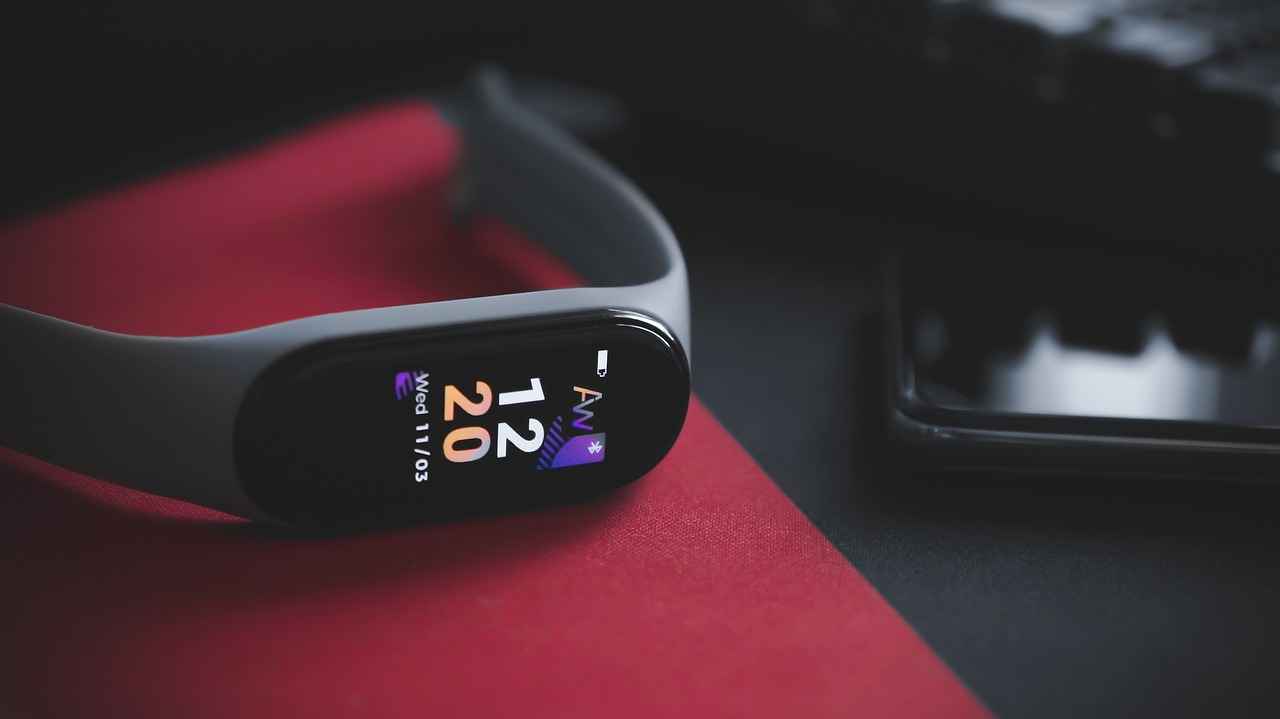
8. Smart Locks
Smart Locks are becoming an essential part of modern home security systems. They not only provide enhanced protection but also offer a range of features that make everyday life more convenient. With the ability to control access remotely, smart locks are redefining how we think about home security.
One of the primary advantages of smart locks is their keyless entry functionality. This feature allows homeowners to unlock their doors using a smartphone app, eliminating the need for traditional keys. This is particularly beneficial for those who frequently misplace their keys or want to provide access to guests without the hassle of physical keys.
In addition to keyless entry, smart locks often come equipped with remote locking and unlocking capabilities. This means that you can secure your home from anywhere, providing peace of mind when you are away. For instance, if you forget to lock your door while leaving for vacation, you can easily do so through your smartphone.
Another significant benefit is the ability to monitor access to your home. Many smart locks provide a log of who enters and exits your home, allowing you to keep track of visitors. This feature is particularly useful for families with children, as parents can monitor when their kids arrive home from school.
Furthermore, smart locks can enhance your home’s security with features like security alerts and integration with other smart home devices. For instance, when paired with a smart doorbell, you can receive alerts and see who is at your door, ensuring that you never miss a visitor.
When choosing a smart lock, consider models such as the August Smart Lock or Schlage Encode. These locks are well-regarded for their reliability and advanced security features, making them excellent choices for homeowners looking to upgrade their security systems.
In conclusion, smart locks offer a blend of convenience and security that traditional locks simply cannot match. By eliminating the need for physical keys, providing remote access, and allowing for monitoring, these innovative devices enhance both your home’s safety and your peace of mind.
8.1. Benefits of Smart Locks
Smart locks are revolutionizing the way we secure our homes by providing enhanced convenience and security. One of the most significant advantages of these innovative devices is their ability to eliminate the need for physical keys. This feature allows homeowners to manage access to their properties effortlessly and securely.
With smart locks, you can grant access to guests remotely. Whether you have a friend visiting while you’re at work or a repair technician needing entry, you can easily send them a digital key through a smartphone app. This means no more hiding spare keys under doormats or worrying about lost keys. You have complete control over who can access your home and when.
Moreover, smart locks offer the ability to track who enters and exits your home. Many models come equipped with activity logs that provide real-time notifications whenever someone unlocks the door. This feature is particularly beneficial for families with children or for those who want to ensure the safety of their elderly relatives. You can monitor access patterns and receive alerts if unexpected entries occur.
Additionally, smart locks enhance security by integrating with other smart home devices. For instance, you can set your smart lock to automatically lock when you leave home or to unlock when you arrive, thanks to geofencing technology. This level of automation not only adds convenience but also ensures that your home is always secured.
In conclusion, the benefits of smart locks extend beyond mere convenience. They provide a higher level of security and control, making them an essential addition to any modern home. By embracing this technology, homeowners can enjoy peace of mind knowing their property is protected, while also simplifying access for trusted individuals.
8.2. Recommended Models
Smart locks are revolutionizing home security, offering a blend of convenience and advanced technology. Among the many options available, two models stand out for their exceptional features and reliability: August Smart Lock and Schlage Encode.
Both of these smart locks provide keyless entry, allowing homeowners to unlock their doors using a smartphone app or a unique code. This eliminates the hassle of fumbling for keys, especially when your hands are full. With the ability to grant temporary access to guests or service providers, these locks enhance both security and convenience.
- August Smart Lock: This model is known for its easy installation and compatibility with existing deadbolts, making it a popular choice for renters and homeowners alike. It features a sleek design and can be controlled via Bluetooth or Wi-Fi, allowing users to monitor access and receive notifications when someone enters or exits the home.
- Schlage Encode: This lock stands out with its built-in Wi-Fi capability, meaning it doesn’t require an additional hub for connectivity. Users can manage access remotely and set up custom codes for family and friends. Its robust construction and advanced encryption technology ensure top-notch security.
When choosing a smart lock, consider key features such as remote access, ease of installation, and compatibility with other smart home devices. Both August Smart Lock and Schlage Encode offer user-friendly interfaces and reliable performance, making them excellent choices for modern homes.
In summary, investing in a smart lock like the August Smart Lock or Schlage Encode enhances your home security while providing unmatched convenience. These devices not only simplify access but also offer peace of mind, knowing you can monitor who enters your home at any time.
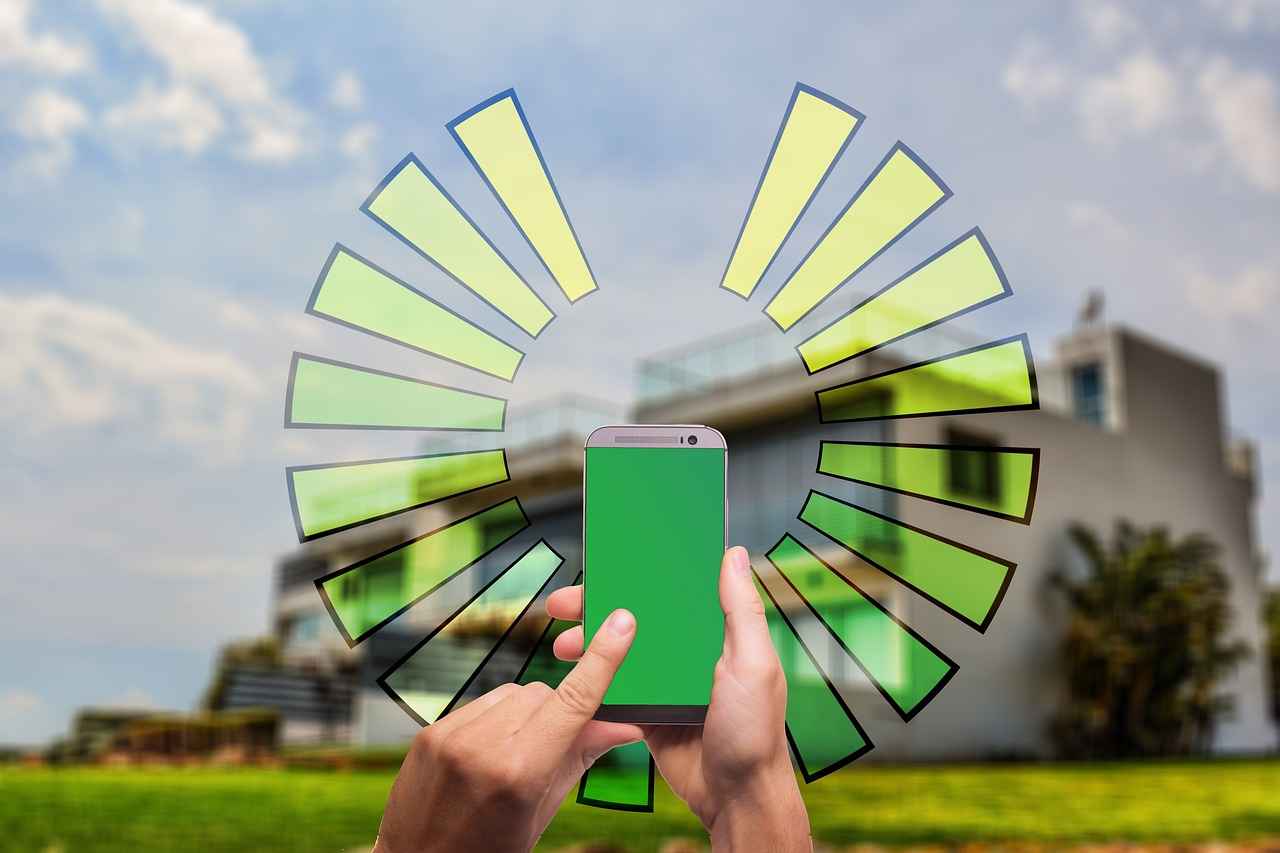
9. Smart Blinds
In today’s fast-paced world, smart blinds have emerged as a revolutionary addition to smart home technology. These automated window coverings allow homeowners to effortlessly manage light and privacy levels, enhancing both comfort and energy efficiency. With the integration of smart technology, you can control your blinds through mobile apps or simply by using voice commands.
9.1. Advantages of Smart Blinds
- Energy Efficiency: Smart blinds can help regulate indoor temperatures by blocking out excessive heat during summer and retaining warmth in winter. This not only enhances comfort but can significantly reduce energy bills.
- Privacy Control: With the ability to adjust your blinds remotely, you can easily maintain your privacy without the need to get up, making them ideal for busy lifestyles.
- Convenience: Imagine returning home to a house that is perfectly lit and private, all thanks to your smart blinds adjusting automatically based on your preferences or schedules.
9.2. Popular Brands
Several brands are leading the way in smart blind technology:
- Lutron: Known for their high-quality products, Lutron offers a range of smart blinds that integrate seamlessly with various smart home systems.
- IKEA: Offering stylish yet affordable options, IKEA’s smart blinds can be controlled via their app, making them accessible for many homeowners.
- Levolor: This brand provides customizable smart blinds that fit various window sizes and styles, allowing for a personalized touch in your home.
Conclusion: Smart blinds are not just a luxury; they are a practical solution for modern living. By incorporating them into your home, you can enjoy enhanced comfort, improved energy efficiency, and greater control over your living environment. As technology continues to evolve, smart blinds will undoubtedly become an essential feature in smart homes.
9.1. Advantages of Smart Blinds
Smart blinds are an innovative addition to modern homes, offering a range of benefits that enhance both comfort and energy efficiency. Here are some key advantages:
- Temperature Regulation: Smart blinds can automatically adjust to block out sunlight during the hottest parts of the day, helping to maintain a comfortable indoor temperature. This feature can significantly reduce the need for air conditioning, resulting in lower energy bills.
- Glare Reduction: By controlling the amount of natural light entering a room, smart blinds help to minimize glare on screens and surfaces. This is particularly beneficial for home offices or entertainment areas where screen visibility is crucial.
- Enhanced Privacy: Smart blinds provide an easy way to manage privacy levels throughout the day. With the ability to schedule when the blinds open and close, homeowners can ensure that their living spaces remain private without sacrificing natural light.
- Convenience: These blinds can be controlled via smartphone apps or voice commands, making it easy to adjust them from anywhere in the house or even remotely. This feature is especially useful for those who are busy or have mobility challenges.
- Integration with Smart Home Systems: Smart blinds can seamlessly integrate with other smart home devices, allowing for automated routines. For example, they can be programmed to close when the home security system is activated or to open at sunrise.
In conclusion, the versatility and functionality of smart blinds make them a valuable addition to any smart home. By improving indoor comfort, enhancing privacy, and providing energy savings, they represent a smart investment for homeowners looking to enhance their living spaces.
9.2. Popular Brands
Smart Blinds are becoming an essential feature in modern smart homes. They not only add a touch of elegance to your decor but also provide functionality that enhances your living experience. Brands like Lutron and IKEA have recognized the growing demand for these innovative products, offering a range of options that cater to various styles and budgets. Their smart blinds integrate seamlessly with existing smart home systems, making them a popular choice among homeowners.
When considering smart blinds, it’s important to evaluate the features that different brands provide. For instance, Lutron is renowned for its high-quality motorized shades that can be controlled via smartphone apps or voice commands. These blinds are designed for energy efficiency, allowing users to adjust light levels throughout the day, which can help in reducing heating and cooling costs. Additionally, Lutron’s products are compatible with major smart home ecosystems, ensuring smooth integration with other devices.
On the other hand, IKEA offers a more budget-friendly option without compromising on quality. Their smart blinds, such as the FYRTUR and KADRILJ, are designed to be user-friendly and easily installed. These products can also be controlled through the IKEA Home Smart app, allowing users to set schedules and adjust settings from anywhere. The aesthetic appeal of IKEA’s designs makes them suitable for a variety of interior styles.
In summary, whether you opt for Lutron’s premium solutions or IKEA’s accessible offerings, both brands provide excellent smart blind options that enhance comfort and energy efficiency in your home. Investing in smart blinds is a step towards a more automated and convenient lifestyle.

10. Smart Irrigation Systems
In today’s world, where water conservation is paramount, smart irrigation systems have emerged as an essential technology for maintaining healthy gardens and lawns. These innovative systems utilize advanced technology to optimize water usage, ensuring that plants receive the right amount of moisture without waste.
Smart irrigation systems operate by integrating weather data and soil moisture levels. This integration allows the systems to adjust watering schedules automatically based on real-time environmental conditions. For instance, if rain is forecasted, the system can delay watering, conserving water and preventing over-saturation of the soil.
- Benefits of Smart Irrigation Systems
- Water Conservation: By using precise data to determine when and how much to water, these systems significantly reduce water waste.
- Healthier Plants: Consistent and appropriate watering leads to better plant health and growth, as plants receive the moisture they need without the risk of drought stress or overwatering.
- Cost Savings: Lower water bills and reduced need for manual labor can lead to significant savings over time.
How They Work
Smart irrigation systems typically include a network of sensors placed in the soil that monitor moisture levels. These sensors communicate with a central control unit, which processes weather forecasts and adjusts watering schedules accordingly. Some systems even allow for remote control via smartphone apps, enabling users to manage their irrigation from anywhere.
Best Options
When considering a smart irrigation system, options like Rachio and RainMachine stand out for their user-friendly interfaces and compatibility with various smart home ecosystems. These systems not only promote efficient lawn care but also integrate seamlessly with other smart devices, enhancing the overall functionality of your smart home.
In conclusion, adopting a smart irrigation system is a proactive step towards sustainable gardening practices. By utilizing technology to manage water resources effectively, homeowners can contribute to environmental conservation while enjoying lush, healthy landscapes.
10.1. How They Work
Smart Irrigation Systems are revolutionizing the way we manage our gardens and lawns. These advanced systems utilize cutting-edge technology to ensure that plants receive the optimal amount of water, thereby promoting healthier growth while conserving precious resources.
At the core of these systems is their ability to automatically adjust watering schedules based on real-time weather conditions. For instance, if rain is forecasted, the system can delay watering, preventing unnecessary water waste. This is achieved through a combination of weather data integration and soil moisture sensors, which work together to assess the specific needs of your plants.
In addition to weather data, these systems often feature smart technology that allows users to monitor and control their irrigation remotely via smartphone apps. This means that homeowners can easily adjust settings or receive alerts about their watering schedules, all from the convenience of their mobile devices.
| Key Features | Description |
|---|---|
| Real-Time Weather Adjustments | Automatically modifies watering based on current weather conditions. |
| Soil Moisture Sensors | Measures soil moisture levels to determine when watering is necessary. |
| Remote Control | Allows users to manage their irrigation system from anywhere using a smartphone app. |
Moreover, smart irrigation systems contribute to sustainable gardening. By using only the amount of water that is needed, they help reduce water consumption, which is particularly important in areas prone to drought. This not only benefits the environment but also leads to lower water bills for homeowners.
In conclusion, smart irrigation systems are an essential investment for anyone looking to maintain a thriving garden while being environmentally conscious. With their ability to adapt to changing weather conditions and provide precise watering, these systems represent the future of efficient gardening.
10.2. Best Options
When it comes to smart irrigation systems, two standout solutions are Rachio and RainMachine. These systems not only simplify lawn care but also contribute to water conservation efforts, making them essential for environmentally conscious homeowners.
| Feature | Rachio | RainMachine |
|---|---|---|
| User Interface | Intuitive mobile app with easy navigation | Simple interface with customizable settings |
| Smart Home Compatibility | Works with Alexa, Google Assistant, and more | Integrates with various smart home platforms |
| Weather Adjustments | Uses hyper-local weather data for irrigation scheduling | Adjusts watering based on real-time weather forecasts |
| Soil Moisture Sensors | Compatible with additional sensors for optimal watering | Built-in soil moisture sensing capabilities |
| Price Range | Varies by model, generally affordable | Competitive pricing with various options |
Both Rachio and RainMachine provide user-friendly interfaces that make it easy for homeowners to monitor and control their irrigation systems. With features like weather-based watering and soil moisture tracking, these solutions ensure that your lawn receives the right amount of water without waste.
- Rachio: Ideal for users seeking a robust app experience with extensive integration options.
- RainMachine: Perfect for those who prefer built-in sensors and straightforward setup.
In conclusion, investing in a smart irrigation system like Rachio or RainMachine not only enhances the efficiency of your lawn care but also promotes sustainable water usage, making them wise choices for the modern homeowner.

11. Smart Air Quality Monitors
Smart Air Quality Monitors are becoming essential devices in modern homes, especially as awareness of indoor air quality grows. These innovative gadgets help track various indoor pollutants, including volatile organic compounds (VOCs), carbon dioxide (CO2), and particulate matter, providing real-time data that empowers homeowners to take action.
Maintaining good air quality is crucial for overall health and well-being. Poor indoor air quality can lead to a range of health issues, including respiratory problems, allergies, and even long-term illnesses. Smart air quality monitors serve as your first line of defense, alerting you to changes in air quality and allowing you to make informed decisions about ventilation and air purification.
- Real-Time Data: Look for monitors that provide live updates on air quality levels, so you can act quickly if pollutants rise.
- User-Friendly Interface: A clear display and easy-to-navigate app are essential for understanding the data without confusion.
- Integration with Smart Home Systems: Choose devices that can connect with your existing smart home ecosystem for automated responses, such as activating air purifiers when pollutants are detected.
Several brands offer reliable air quality monitors:
- Eve Room: Known for its sleek design and accurate readings, Eve Room tracks VOCs and temperature.
- Netatmo: This monitor provides comprehensive data on indoor air quality, including CO2 levels, and integrates seamlessly with other smart home devices.
- Awair: Awair not only tracks air quality but also offers personalized recommendations for improving your indoor environment.
As we spend more time indoors, investing in a smart air quality monitor is a proactive step towards ensuring a healthy living space. With real-time data and actionable insights, these devices empower you to make informed decisions that enhance your well-being.
11.1. Importance of Air Quality Monitoring
Monitoring air quality is essential for maintaining a healthy living environment, particularly for individuals with allergies, asthma, or other respiratory conditions. The air we breathe can significantly impact our overall health, making it crucial to be aware of indoor pollutants and allergens.
Why is Air Quality Important?
- Health Risks: Poor air quality can lead to a variety of health issues, including respiratory infections, chronic lung diseases, and cardiovascular problems.
- Allergen Management: For those with allergies, monitoring air quality helps identify triggers, allowing for better management and reduction of symptoms.
- Improved Well-Being: Clean air contributes to overall well-being, enhancing mood, sleep quality, and productivity.
How Air Quality Monitors Work
Smart air quality monitors use advanced sensors to detect pollutants such as volatile organic compounds (VOCs), particulate matter (PM2.5 and PM10), carbon dioxide (CO2), and humidity levels. By providing real-time data, these devices empower users to take necessary actions to improve air quality.
Key Features to Look For
- Real-Time Monitoring: Instant feedback on air quality levels.
- Data Logging: Historical data tracking to identify trends and patterns.
- Alerts and Notifications: Immediate alerts when air quality deteriorates.
Conclusion
Incorporating a smart air quality monitor into your home is a proactive step towards ensuring a healthier living space. By being informed about the air you breathe, you can make better decisions regarding ventilation, air purification, and overall environmental health.
11.2. Recommended Devices
When it comes to maintaining a healthy indoor environment, smart air quality monitors are essential tools that provide invaluable insights into the air you breathe. Among the most reliable brands in this category are Eve Room and Netatmo. Both of these brands offer advanced features that make monitoring air quality easy and efficient.
| Brand | Key Features | Integration |
|---|---|---|
| Eve Room |
| Compatible with Apple HomeKit for seamless integration with other smart devices. |
| Netatmo |
| Works with Amazon Alexa, Google Assistant, and Apple HomeKit. |
Both devices provide comprehensive data on air quality, allowing users to make informed decisions about their living spaces. For instance, Eve Room focuses on indoor air quality, helping users understand how their activities influence the air they breathe. On the other hand, Netatmo not only monitors indoor air but also assesses outdoor conditions, offering a holistic view of your environment.
In addition to their primary functions, these smart monitors can integrate with other smart home devices, enabling automation based on air quality readings. For example, if Eve Room detects high levels of VOCs, it can trigger an air purifier to activate, ensuring a healthier atmosphere.
In conclusion, investing in a smart air quality monitor like Eve Room or Netatmo is a proactive step towards enhancing your home environment. With their advanced features and smart integrations, these devices not only help you track air quality but also empower you to take action for a healthier lifestyle.
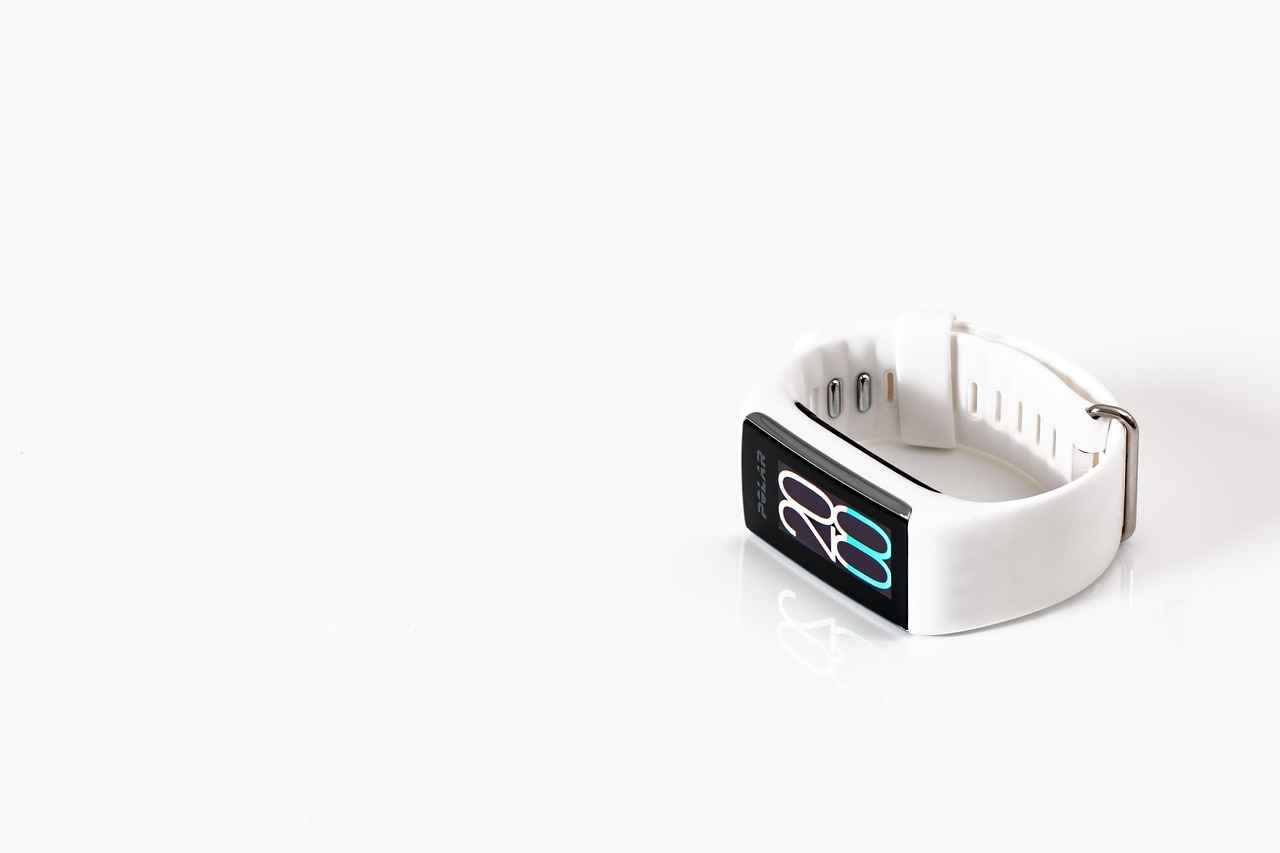
12. Conclusion: Embracing Smart Home Technology
Embracing Smart Home Technology is not just about keeping up with the latest trends; it’s about enhancing your daily life in meaningful ways. By incorporating a variety of smart home devices, you can significantly improve your quality of life through increased convenience, enhanced security, and better energy efficiency. This article explores how these innovations can transform your home into a more connected and efficient space.
Smart home technology allows you to automate tasks, monitor your home remotely, and manage energy consumption effectively. For instance, with smart plugs, you can control any appliance from your smartphone, making it easy to turn off devices when not in use, thus saving energy. Similarly, smart thermostats learn your heating and cooling preferences, optimizing your home’s climate while reducing energy bills.
Security is another critical aspect where smart technology shines. With smart security cameras and smart doorbells, homeowners can monitor their property in real time, receive alerts about unusual activities, and communicate with visitors from anywhere. This level of control provides peace of mind, knowing that your home is safe and secure.
Energy efficiency is further enhanced through devices like smart light bulbs that allow you to customize your lighting based on your mood or activity. They can be scheduled to turn on or off at specific times, reducing unnecessary energy consumption.
In conclusion, embracing smart home technology is about creating a living environment that is not only efficient but also comfortable and secure. As you integrate these devices into your home, you’ll find that they not only simplify your daily tasks but also contribute to a more sustainable lifestyle. So, take the plunge and explore the vast world of smart home devices to enjoy a more connected and efficient home.
Frequently Asked Questions
- What are smart home devices?
Smart home devices are gadgets that connect to your home network, allowing you to control them remotely via smartphone apps or voice assistants. They can automate tasks, enhance security, and improve energy efficiency.
- How do smart plugs work?
Smart plugs plug into your existing outlets and allow you to control any device connected to them through an app or voice commands. This means you can turn devices on or off from anywhere, making your home more convenient and energy-efficient.
- Are smart light bulbs worth it?
Absolutely! Smart light bulbs offer customizable lighting options, energy savings, and the ability to set schedules. They can transform the ambiance of your home while reducing your electricity bill.
- Can I use smart devices without a hub?
Yes, many smart devices can operate independently via Wi-Fi or Bluetooth. However, using a smart home hub can simplify management and enhance automation by allowing devices to communicate with each other seamlessly.
- How do smart security cameras enhance home security?
Smart security cameras provide real-time monitoring, motion detection alerts, and often come with features like night vision and two-way audio. This allows you to keep an eye on your home from anywhere, ensuring peace of mind.



